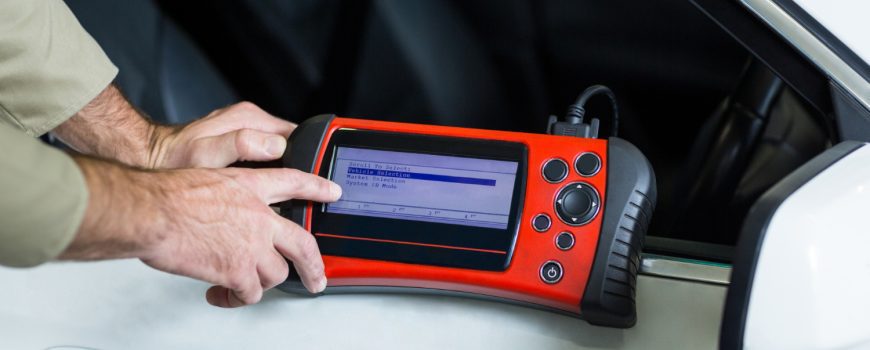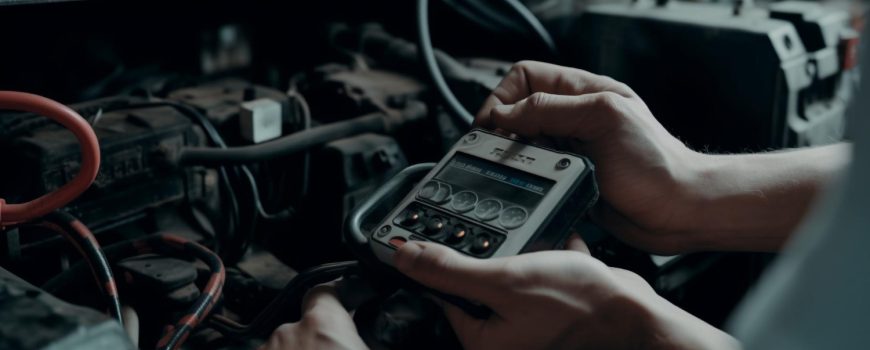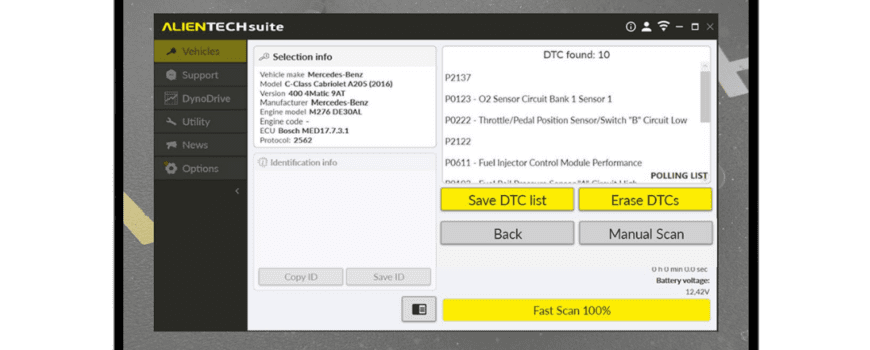Table of Contents
Modern cars are comparatively a lot smarter than the older ones. That’s because they have tiny computers in them. These are the computers that control a lot of vital parts of your car. They control things as mundane as the engine, fuel system, and gear shifting. So you might hear other names like ECU, ECM, TCM, and TCU. These names are similar to one another, but they all serve different purposes. We are going to discuss them comprehensively and assist you in comprehending these terms.
1. What Is ECU in a Car?
ECU is an abbreviation for Engine Control Unit or Electronic Control Unit. It is one of the integral parts of cars in the present world. The ECU, often times referred to as the ‘brain’ of the vehicle, takes input information from different sensors and makes decisions in real time based on that information. These are decisions that keep your car running smoothly, efficiently, and safely. It regulates everything from how much fuel is injected into the engine to how the engine responds to your driving.
ECU Key Functions:
- It controls the overall engine operating process while you drive down the road.
- By altering fuel injection in response to driving conditions, it regulates fuel economy.
- It helps reduce harmful emissions by monitoring and optimizing combustion.
- It communicates with other systems, like the TCM, to improve vehicle performance.
2. What Is ECM in a Car?
ECM is an acronym for Engine Control Module. It’s almost identical to ECU and mostly does the same work as ECU. The ECM and ECU are one and the same in most vehicles, particularly newer ones. When you see people ask, “What is the ECM?” or “What does ECM stand for?”, they are typically referring to the computer system that manages functions related to the engine. The ECM collects information from engine sensors and acts on the information provided to help the engine run more efficiently.
ECM Key Functions:
- It oversees engine performance to maintain smooth, even power.
- It works to gather engine data by monitoring sensors for oxygen, temperature, and other variables.
- It modifies the behavior of the engine to improve fuel use and power output.
- It also improves emissions and fuel economy with intelligent tuning.
3. What Is TCM on a Car?
TCM stands for Transmission Control Module, and as its name suggests, it is a small computer that controls your car’s transmission system (automatic transmission cars are not particularly manual transmission ). When people ask about “what is a transmission control module ” or “what is TCM on a car,” they mean the component responsible for making sure your car shifts into the right gears at the right time. The TCM works closely with the ECU or ECM to make your ride smooth and efficient, reading data in real time and making quick decisions to optimize shifting.
TCM Key Functions:
- It controls automatic transmission based on the road/engine conditions.
- It reads things like throttle position and engine speed to figure out when to change gear.
- It helps improve fuel economy by optimizing gear changes.
- It also makes driving easier, as it makes shifting easier and more responsive.
4. What Is TCU in a Car?
TCU stands for Transmission Control Unit, and it is a component that controls the gearbox in a car. Just like the TCM, it is responsible for controlling the operation of the transmission. The terms TCU and TCM are spelled similarly and are common, especially in automatic and semi-automatic cars, because they can be used interchangeably for extremely similar purposes. What does TCU stand for? Or what is TCU in a car? is literally the organ that controls and optimizes the transmission system.
TCU Key Functions:
- The TCU operates the clutch and gear shifts, ensuring smooth and precise transitions between gears.
- It coordinates with the engine ECU/ECM to optimize the performance of both the engine and the transmission.
- Additionally, the TCU adjusts shifting patterns based on the driver’s behavior, such as acceleration and braking, as well as road conditions to provide a more responsive and efficient driving experience.
Comparison Table: ECU vs ECM vs TCM vs TCU
| Feature | ECU | ECM | TCM | TCU |
| Full Form | Engine Control Unit | Engine Control Module | Transmission Control Module | Transmission Control Unit |
| Controls | Engine & multiple car systems | Mainly engine | Transmission | Transmission |
| Common in | Most modern cars | Mostly American & Japanese cars | Automatic cars | Automatic & dual-clutch cars |
| Works With | TCM, ECM, sensors | ECU, sensors | ECU/ECM, TCU | ECU/ECM |
| Focus Area | Whole engine system | Engine system | Gear shifting | Gear shifting |
| Also Called | ECM in some cases | ECU in some cases | TCU in some cars | TCM in some cars |
Pros and Cons of Each Module
| Module | Pros | Cons |
| ECU | Improves fuel economy, emission control, and engine performance | Can be expensive to replace or repair. |
| ECM | Ensures the engine runs efficiently and smoothly. | Failure can cause poor fuel economy or no start. |
| TCM | Enhances gear shifts, driving comfort, and fuel use. | Malfunctions lead to jerky or improper shifting. |
| TCU | Ideal for advanced automatic and semi-automatic transmissions. | More complex, harder to diagnose without professional tools. |
Price Comparison (USA Market – 2025 Estimates)
| Module | Average Price (USD) | Notes |
| ECU (Engine Control Unit) | $300 – $800 | Varies based on vehicle make, model, and year. |
| ECM (Engine Control Module) | $250 – $750 | Similar to ECU; often used interchangeably. |
| TCM (Transmission Control Module) | $200 – $650 | Typically found in automatic transmission vehicles. |
| TCU (Transmission Control Unit) | $250 – $700 | Common in European and Japanese imports. |
Prices vary based on car make, model, and whether the part is new or refurbished.
Compatibility Comparison
| Module | Works In | Not Compatible With |
| ECU | Petrol, diesel and hybrid cars | Older carburetor cars |
| ECM | Mostly fuel-injected engines | Very old vehicles |
| TCM | Automatic and CVT cars | Manual transmission |
| TCU | Dual-clutch & advanced auto | Manual or basic auto |
Signs of a Faulty ECU, ECM, TCM, or TCU
| Module | Common Signs of Failure |
| ECU/ECM | Engine misfires, poor fuel economy, car won’t start |
| TCM/TCU | Hard shifting, gear slipping, transmission warning light |
If you face these issues, it’s best to have the module scanned with an OBD2 scanner and consult a mechanic.
Module Comparison – USA Market (2025 Estimates)
| Module | Full Form | Controls | Common In | Price Range (USD) |
| ECU | Engine Control Unit | Engine + Other Systems | Most vehicles | $300 – $800 |
| ECM | Engine Control Module | Engine | American / Japanese cars | $250 – $750 |
| TCM | Transmission Control Module | Transmission | Automatic cars | $200 – $650 |
| TCU | Transmission Control Unit | Transmission | Dual-clutch / Imports | $250 – $700 |
Wrapping Up
These small computers — ECU, ECM, TCM, and TCU — each play a vital role in your car. In modern vehicles, they work together to ensure smoother, more efficient driving. The ECU/ECM controls the engine, while the TCM/TCU controls the transmission. Understanding their roles helps you make informed decisions about repairs. If you’re unsure or suspect a fault, consult a mechanic for a diagnostic scan to identify the issue and avoid unnecessary repairs.
FAQs: ECU vs. ECM vs. TCM vs. TCU
1. Are ECU and ECM the same thing?
Yes, in many cars, ECU (Engine Control Unit) and ECM (Engine Control Module) refer to the same device. Some manufacturers prefer one term over the other, but both control engine functions.
2. Can I drive with a faulty ECM or TCM?
You can, but it’s not safe or smart. A faulty ECM can cause engine failure or bad fuel mileage. A bad TCM can lead to rough or dangerous gear shifting. Always get it checked.
3. Does a manual car have a TCM or TCU?
No. Manual cars do not have a TCM or TCU because the driver controls gear shifting manually. These modules are only for automatic or semi-automatic transmissions.
4. Can I replace the ECU or TCM myself?
It’s possible for some experienced car owners, but it’s not recommended unless you’re skilled. These modules often need programming or coding after installation.
5. Will disconnecting the battery reset the ECU or ECM?
It might reset some settings, but it won’t fix a faulty ECU. For proper diagnosis and reset, a mechanic will use a diagnostic tool.
6. Do all automatic cars have a TCM or TCU?
Yes, all automatic and CVT cars have either a TCM or TCU. It controls how the car shifts gears without driver input.
7. How often do these modules fail?
They’re built to last a long time, often the life of the vehicle. But damage from water, electrical problems, or poor maintenance can cause early failure.







